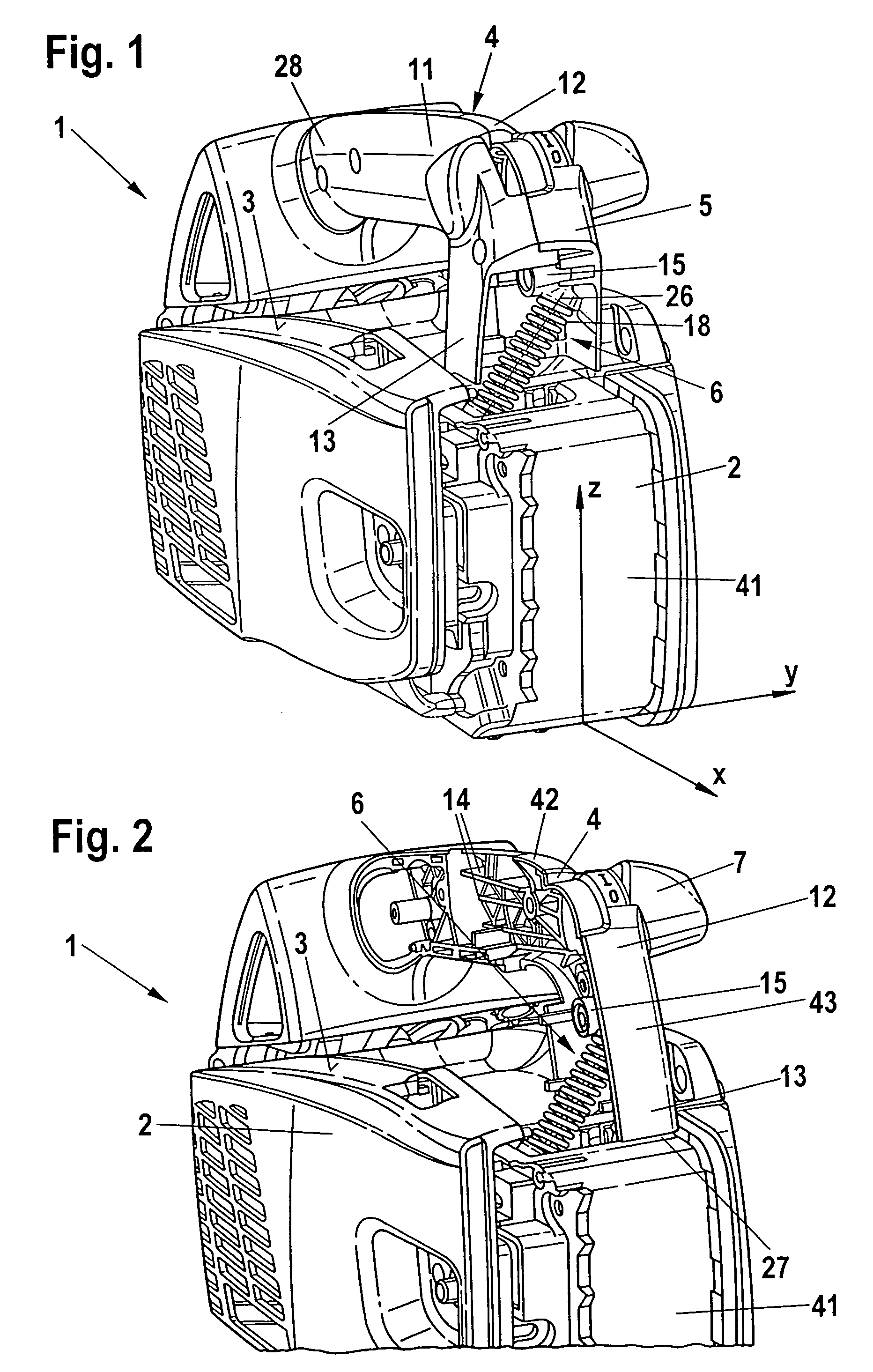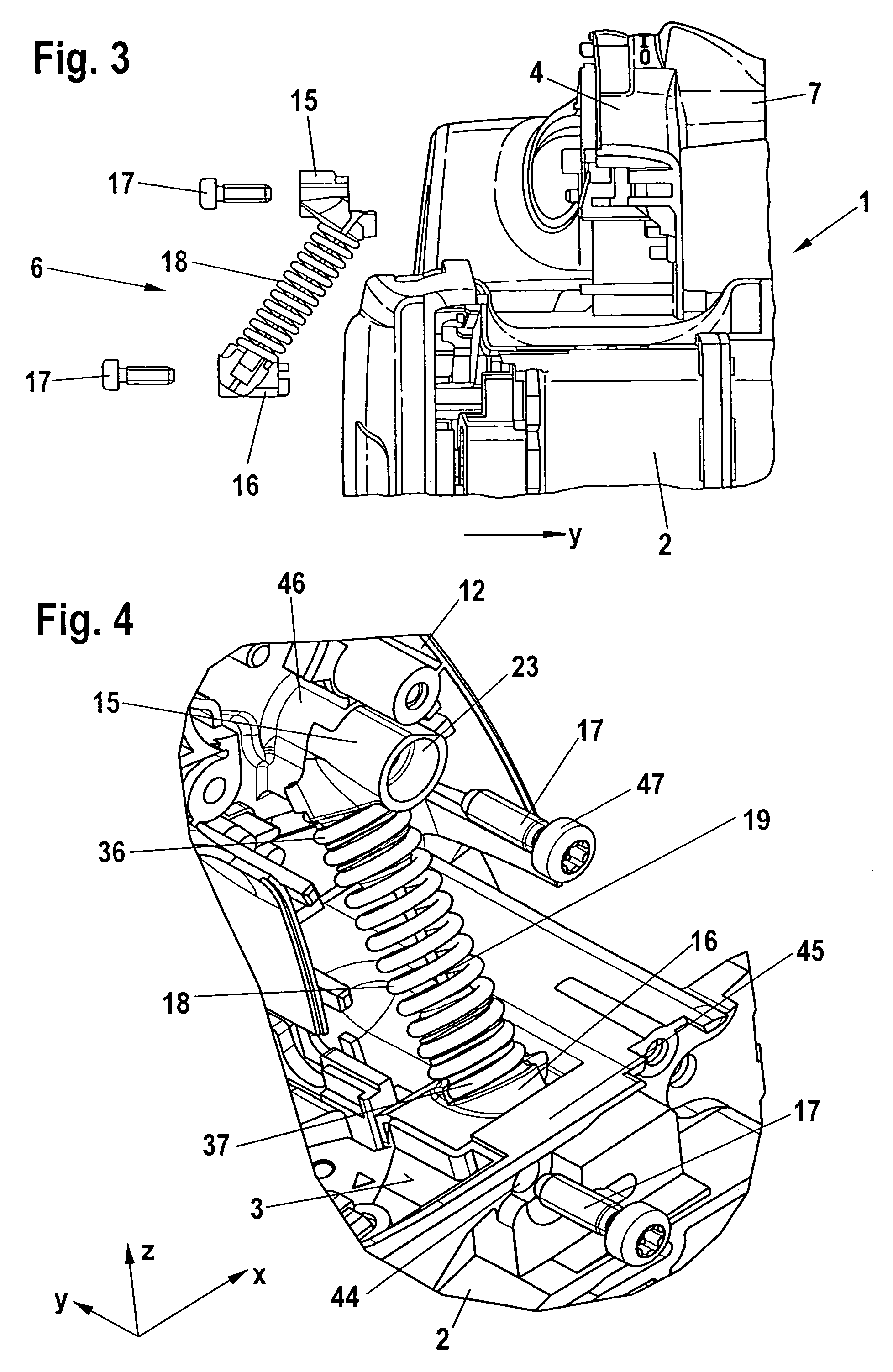Manually guided implement
a technology of manual guide and implement, which is applied in the direction of manufacturing tools, machines/engines, combustion air/fuel air treatment, etc., to achieve the effect of simple construction of implemen
- Summary
- Abstract
- Description
- Claims
- Application Information
AI Technical Summary
Benefits of technology
Problems solved by technology
Method used
Image
Examples
Embodiment Construction
[0023]Referring now to the drawings in detail, the manually guided or portable implement illustrated in FIG. 1, namely a power saw 1, has a housing 2 in which is disposed an internal combustion engine, in particular a two-cycle engine. The internal combustion engine drives a saw chain that circulates on a guide bar, which is not shown in FIG. 1. The guide bar extends from the front side 41 of the housing 2 parallel to the longitudinal central plane of the power saw 1 that is defined by the longitudinal direction x and the height direction z. Also with other manually guided implements, such as cut-off machines, the tool can be disposed parallel to the longitudinal central plane of the implement. In FIG. 1, the power saw 1 is shown in the normal operating position. In this position, the upper side 3 of the housing 2 faces upwardly. Disposed on the upper side 3 of the housing 2 is an upper handle 4, a first end 13 of which is secured to the upper side 3 adjacent to the front side 41. T...
PUM
| Property | Measurement | Unit |
|---|---|---|
| angle | aaaaa | aaaaa |
| angle | aaaaa | aaaaa |
| angle | aaaaa | aaaaa |
Abstract
Description
Claims
Application Information
 Login to View More
Login to View More - R&D
- Intellectual Property
- Life Sciences
- Materials
- Tech Scout
- Unparalleled Data Quality
- Higher Quality Content
- 60% Fewer Hallucinations
Browse by: Latest US Patents, China's latest patents, Technical Efficacy Thesaurus, Application Domain, Technology Topic, Popular Technical Reports.
© 2025 PatSnap. All rights reserved.Legal|Privacy policy|Modern Slavery Act Transparency Statement|Sitemap|About US| Contact US: help@patsnap.com



